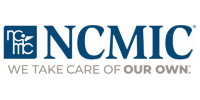Urgent Appeal From COCSA
Dear NYSCA Members, An urgent appeal from COCSA is requesting the support of all state associations. The Congress of Chiropractic State Associations embraces two ACA initiatives. The first is a data collection project where each doctor sends the ACA 5 example charts showing managed care abuse that has hindered patient care; the second initiative is an effort to encourage all DC’s to appeal every restriction of care. This “en masse” effort is intended to push back insurers’ efforts to withhold benefits that patients are entitled to. The NYSCA is wholly behind these ACA initiatives. COCSA has set goals for the state associations in procuring un-sanitized case files of inappropriate denial of care. Details of their plan are found on their homepage www.cocsa.org. You help is needed now! The ACA General Counsel states the window is now open for the real possibility of legal action against the shameless practices of Managed Care groups. The cornerstone of any legal action will be patient files that can be used as direct evidence. These files must bear the scrutiny of the court, therefore we urge you to review the instructions below and join the effort for your future as well as that of patients in your state. Data Collection initiative at www.acatoday.org/datacollection (also below) DOI Appeals initiative at www.acatoday.org/appeals (toolkit for offices) To do your part and assist ACA, we ask that you take the following steps. 1. Read and sign the HIPAA Business Associate Agreement (found here) so that patient information may be provided directly to the ACA Insurance Relations Department. Note that all patient records will be kept in a locked room in locked cabinets pursuant to HIPAA requirements. 2. Identify patients whose care or benefits have been compromised by coverage decisions made by managed care networks and speak with them to ascertain if they are interested in allowing their medical file to be shared with the ACA and regulatory authorities. A patient information sheet is provided here for your convenience. No information regarding patients or their doctors will be shared with managed care companies. Specifically, we need copies of the following items from your patients’ files: a) Completed patient intake forms b) Completed diagnostic testing reports c) Chart notes d) All forms that show a complete chronology of the interaction with the managed care organization 3. Obtain HIPAA Authorization: Explain HIPAA rights to the patient – (a brochure can be found here just in case you are unsure if your office documentation is up to date.) Once you are sure the patient clearly understands the reason for this initiative, and they indicate they would like to participate, have them sign the HIPAA Authorization, found here which has been pre-completed for your convenience. 4. Mail the following to the ACA: copies of your five complete un-sanitized patient files with the associated HIPAA Authorization and your signed Business Associate Agreement to the following address: Documents Needed to Assist Business Associate Agreement Cover Letter to Doctors Four Steps to Help Patient Information Sheet HIPAA Authorization Questions? Contact @ ACA Daniel Lyons at [email protected] or call - 703-812-0225.




